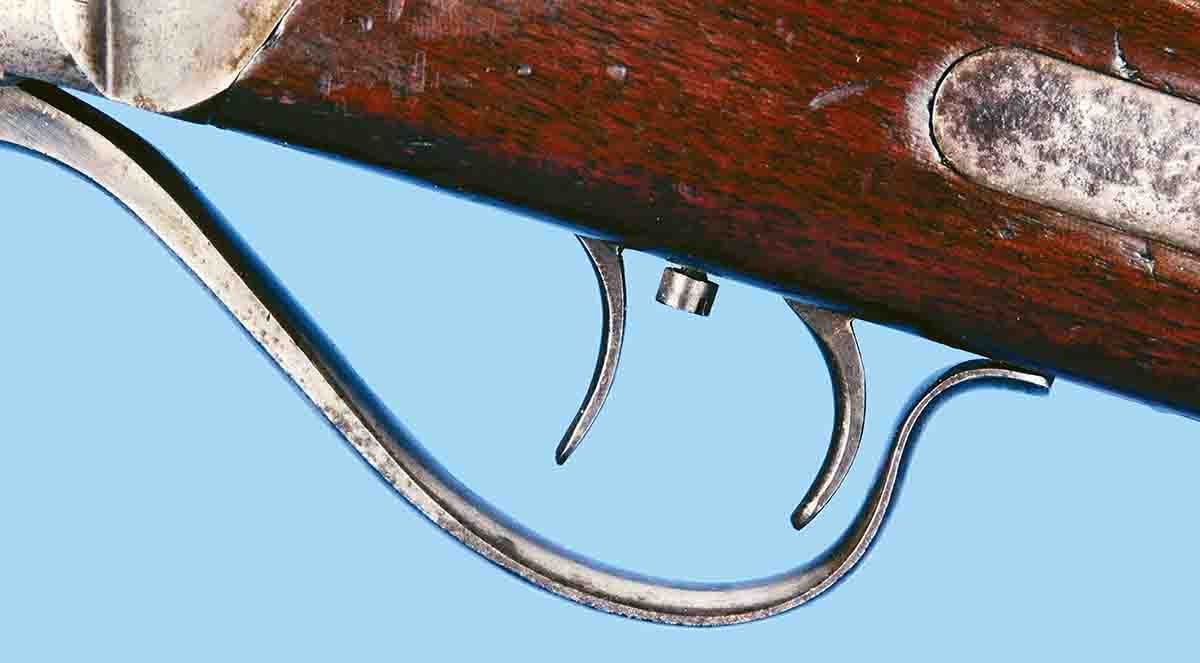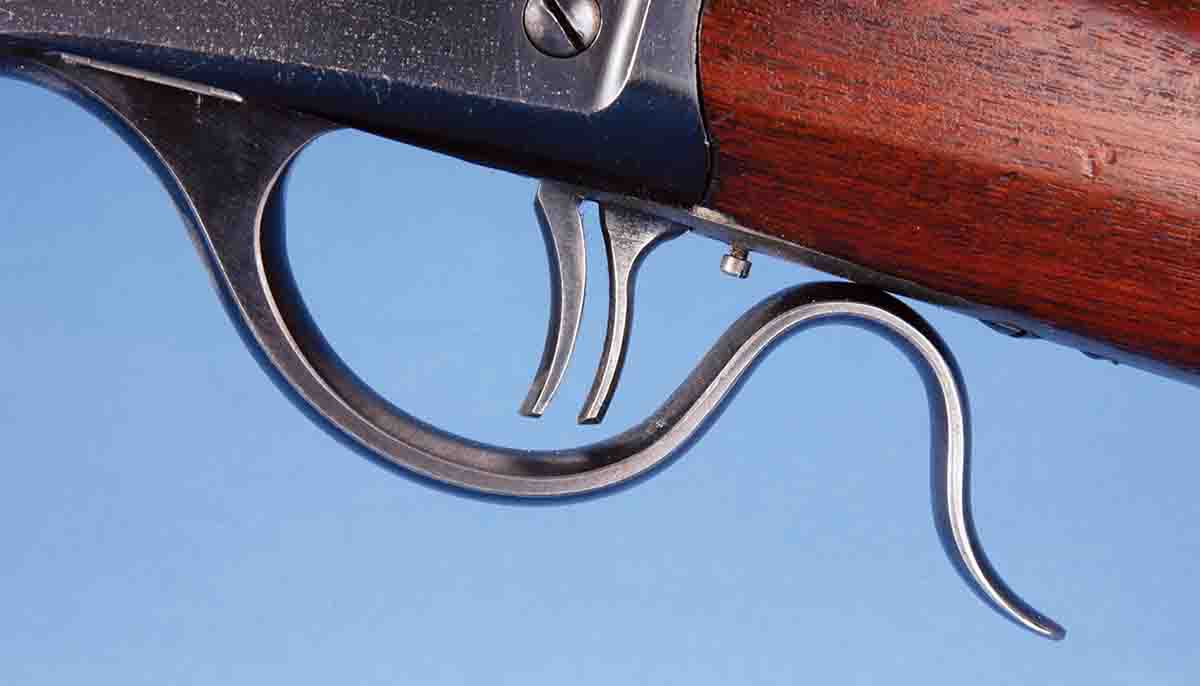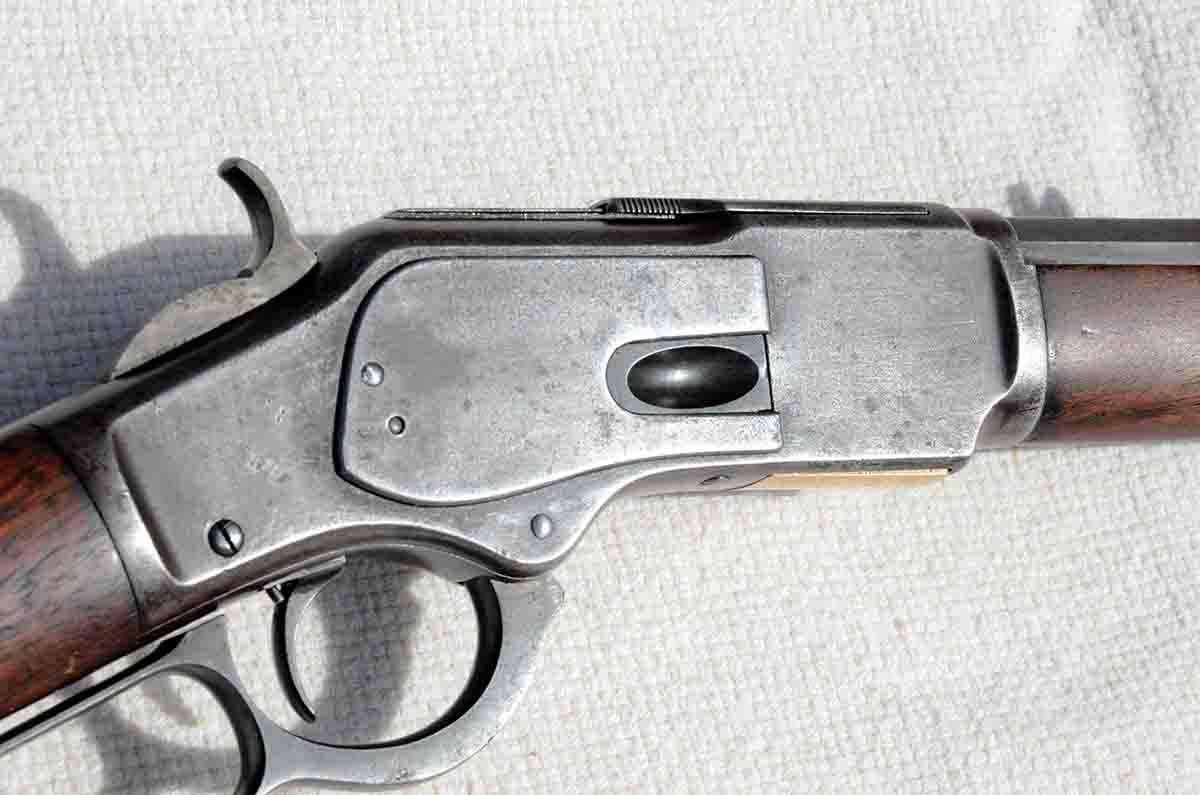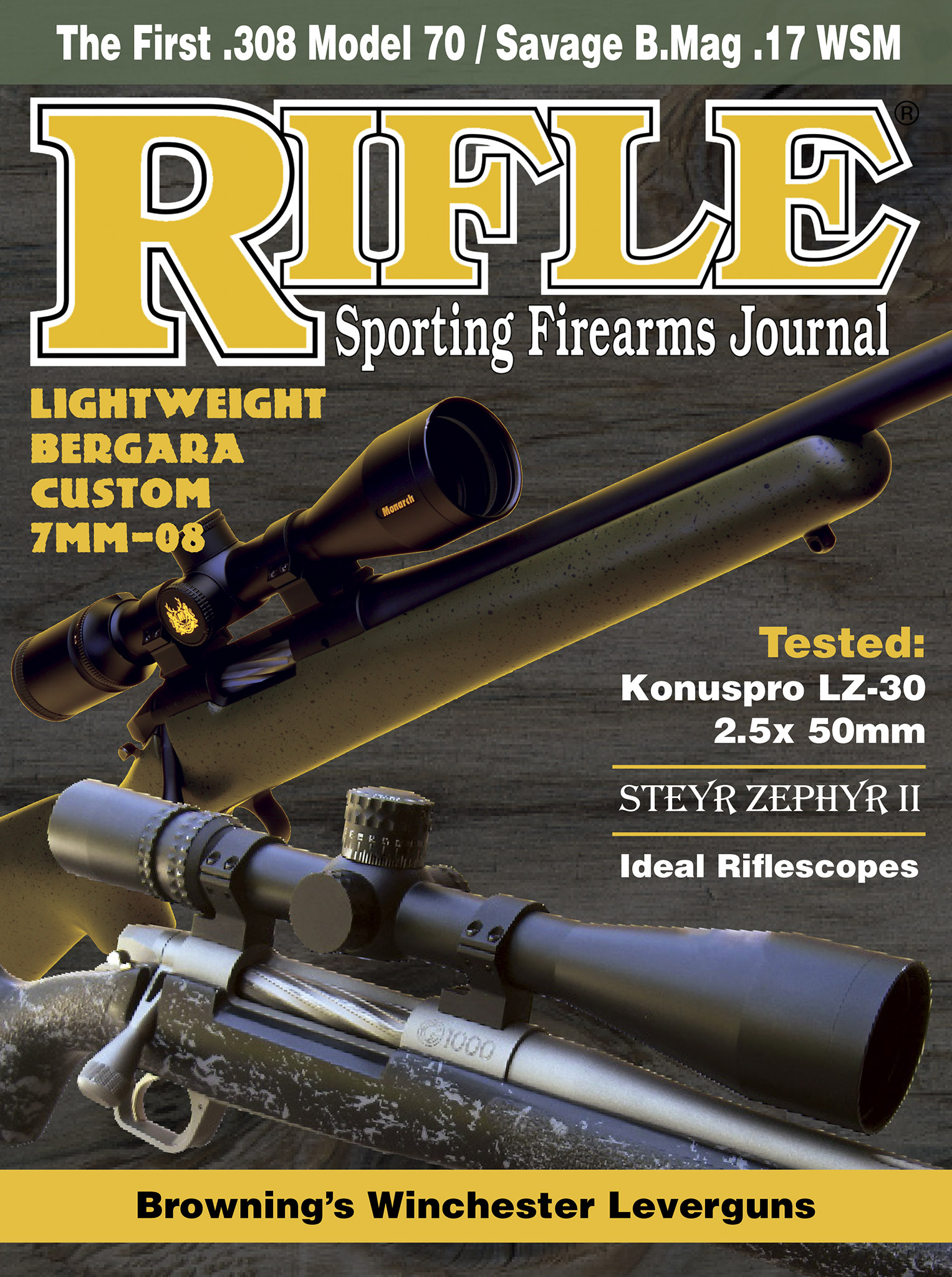Down Range
Set Triggers
column By: Mike Venturino | November, 18
Set triggers are an anachronism; a holdover from a bygone era. Immensely popular in their heyday, my bet would be that the vast majority of today’s riflemen and hunters are not familiar with them at all. In simple terms, a “set trigger” is a mechanism by which a rifle is fired with a trigger pull weight measured in ounces instead of pounds. It is meant for precise shooting and not for fast shooting – or what some hunters might call “snap” shooting.

Such trigger mechanisms come in three basic types: Wide-spaced double set, close-coupled double set and single set. All three types work differently. The usual arrangement for wide, double-set triggers is for the rear trigger to set the front one. In other words, the shooter pulls it rearward until it “clicks,” which means that the front trigger will then release with mere ounces of pressure. The front trigger can be used to fire the rifle by itself, but the pull is relatively heavy with plenty of slack.
Wide double-set triggers can be adjusted with a tiny screw between the two triggers, and it can be inadvertently turned. For example, at a recent match my Shiloh Sharps Model 1874 with double-set triggers went off just as I inserted my finger into the trigger guard. I chastised myself for being ham-handed. The next shot went off just as my finger touched the front trigger. Sure enough, the pull weight adjustment screw had moved slightly. When rotated a half-turn counterclockwise, the front trigger was adjusted back to its preferred approximate .5-pound weight. It might interest readers to know that in owning and shooting more than 40 original and reproduction Sharps Model 1874s for almost 40 years, this was the first time such a thing has happened to me with double-set triggers.
Wide double sets were the only type of set triggers available on the big Sharps Model 1874. They were very popular; more originals are seen with them than an ordinary single trigger – despite an extra cost of $4 on a rifle otherwise selling for only $30.

Remington took another route with its No. 1, commonly known as the rolling block. The company’s only set-trigger option was a single set.
In operation, the shooter pushes it forward until it clicks. Then the pressure required to release it is only a fraction of its unset weight. I have never experienced a single-set trigger with a pull weight as light as double-set triggers, but I have seen some champion-class Black Powder Cartridge Rifle Silhouette (BPCRS) competitors win with single-set triggers. As with wide-spaced double sets, there is a screw near the trigger for adjustment. On a Remington No. 1 rifle retailing for $26, a single-set trigger was a $2.50 option. Later in the 1880s, Remington’s No. 3 Hepburn with wide-spaced, double-set triggers became available.
Winchester Repeating Arms supplied all three types of set triggers. The company’s 1899 catalog, reprinted by Wolfe Publishing years ago, lists single-set triggers as $2, close-coupled double sets as costing $3 and the wide-spaced type (named Schuetzen by Winchester) was $6. These triggers were available as custom options on all leverguns from the Model 1873 through Model 1894 and the Model 1885 Single Shot. Single-set and wide-spaced, double-set trigger functions are described above. With the close-coupled double sets, the rear trigger is pushed forward until it clicks, and then the front trigger has a light release.
Besides all the Sharps 1874s I have shot with wide-spaced, double-set triggers, I’ve also owned a few original rolling blocks with single-set triggers and have a Lone Star rolling block that was custom fitted with wide-spaced, double-set triggers. Admittedly, over a period of 20 years that rifle’s triggers have ceased functioning on four different occasions, but when they work they are excellent.

Over the years I’ve owned one Winchester or another with all three types of triggers. A couple of High Walls have had Schuetzen double sets or close-coupled double sets, and several Model 1873s with single-set triggers have passed through my hands. Once I even bought a nice “Continental Style” Mauser ’98 8mm sporter just because it had wide-spaced, double-set triggers, and it now belongs to a friend who bought it from me for the same reason.
As much as set triggers help with marksmanship, they require experience for proper use. Both in the hunting field and on firing lines, I have seen rifles fired as soon as their set triggers were pressed. It is a disconcerting situation and reinforces the idea that set triggers should be well maintained and checked often for wear. Set triggers can also allow a competitor to develop poor habits while still achieving respectable scores. Still, I would prefer them on all my black powder cartridge rifles.


